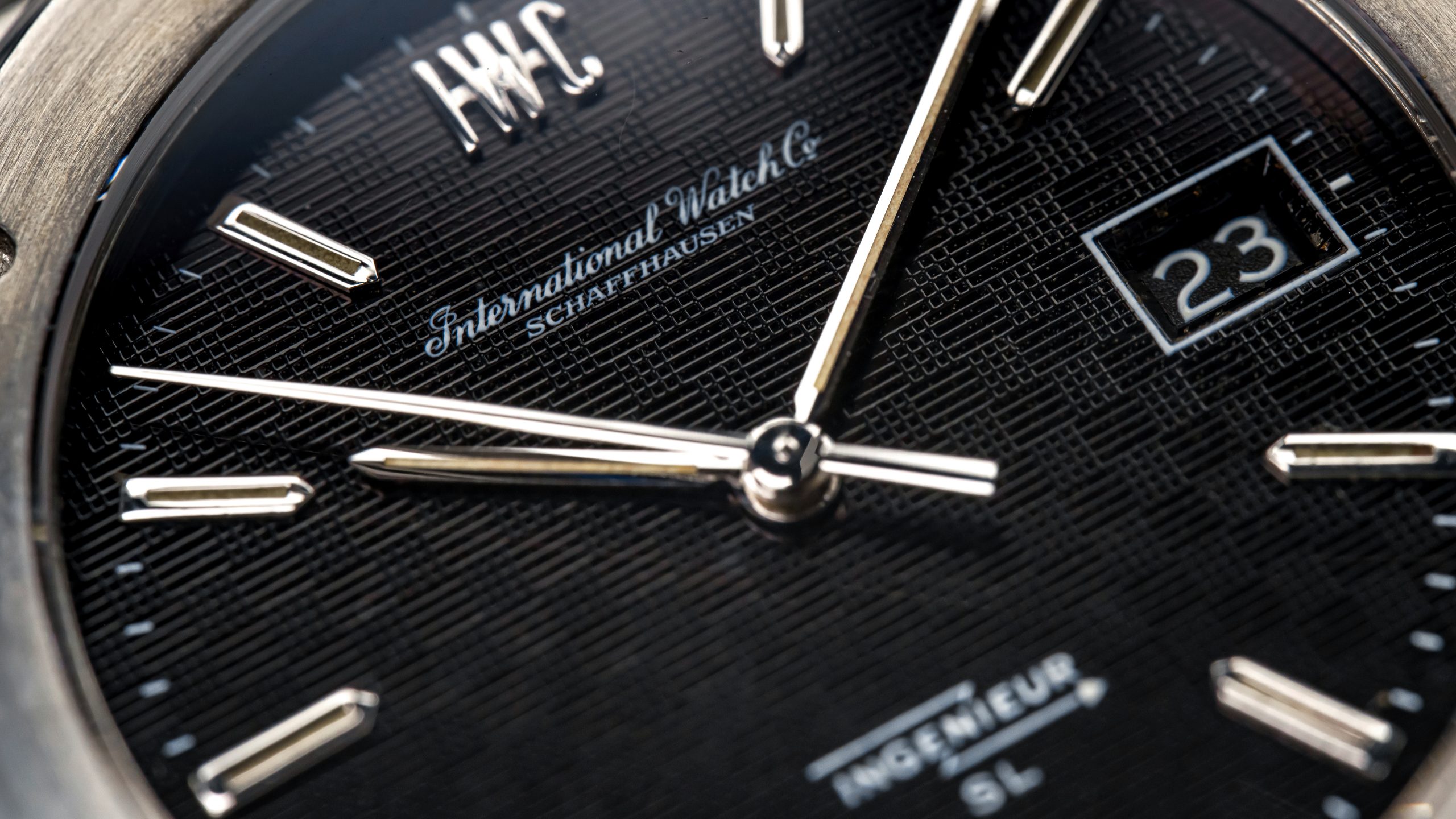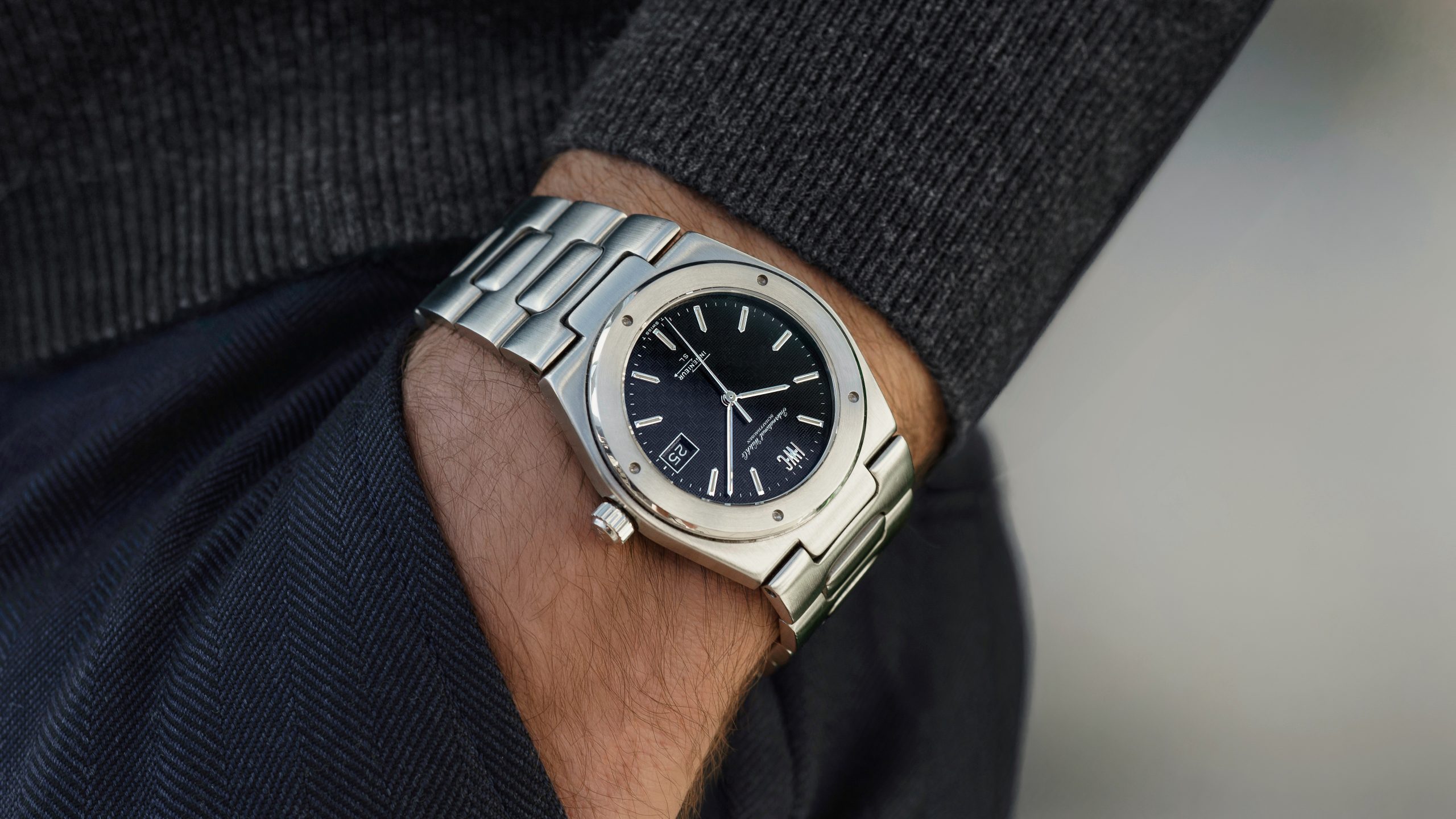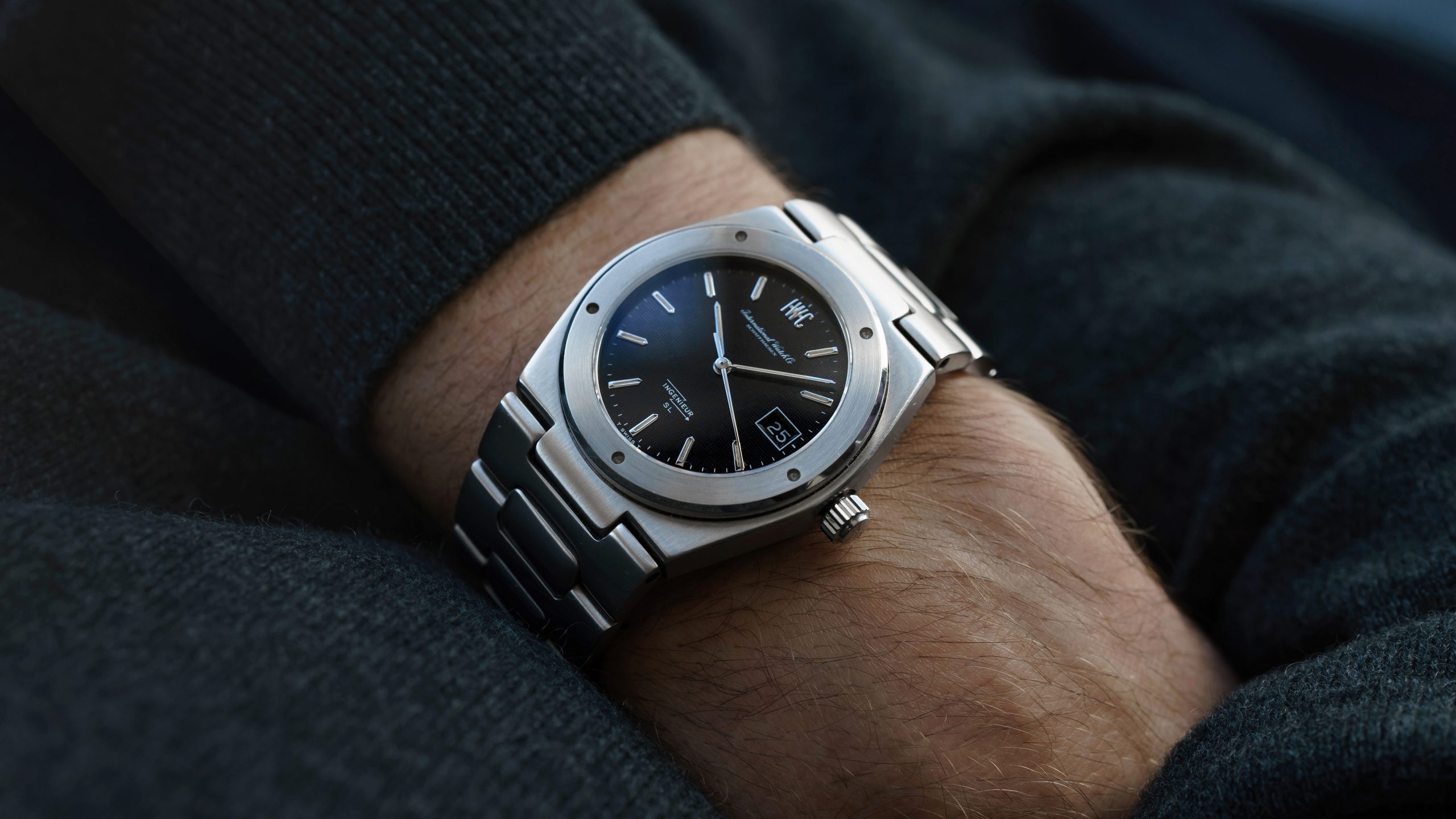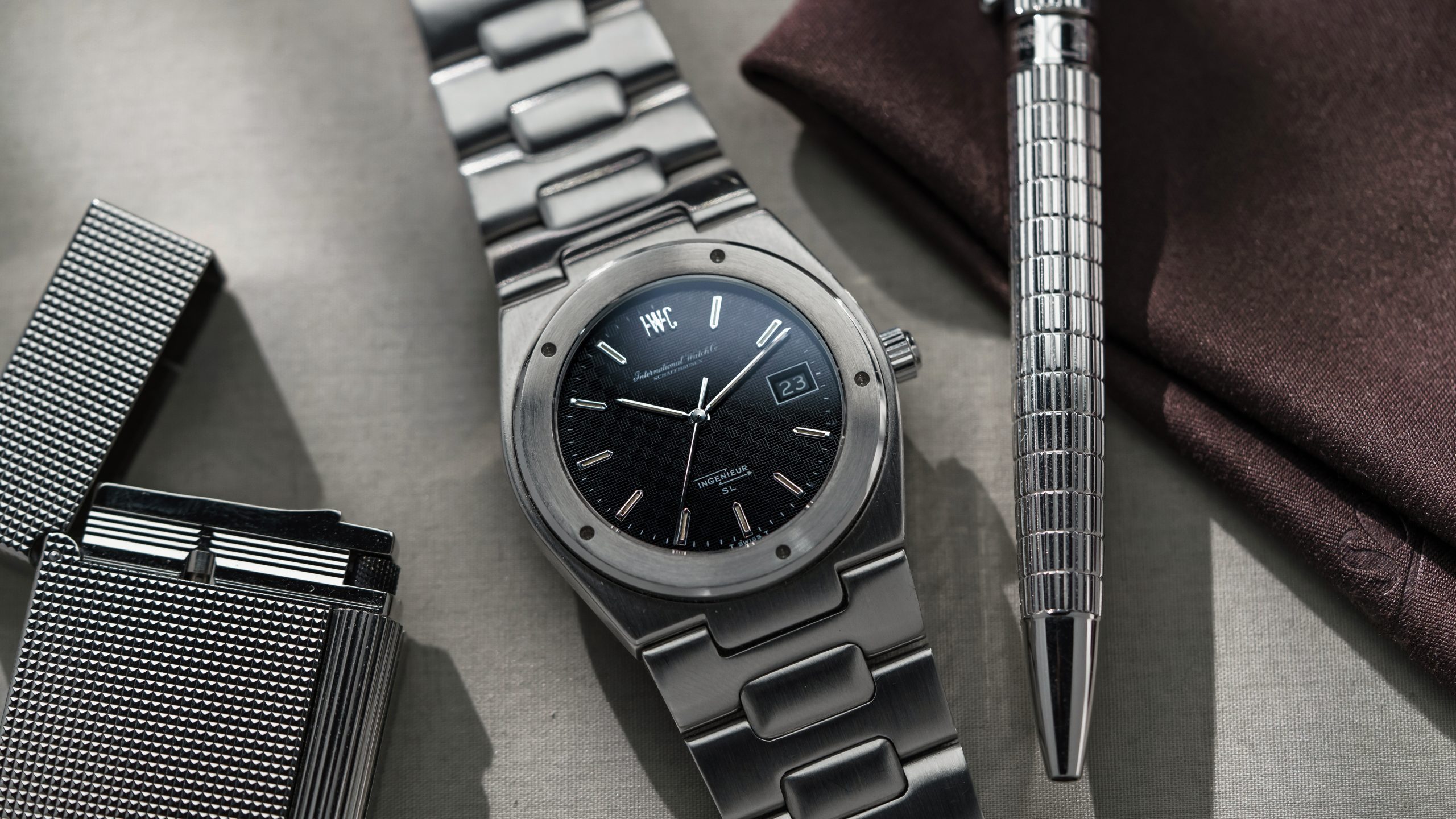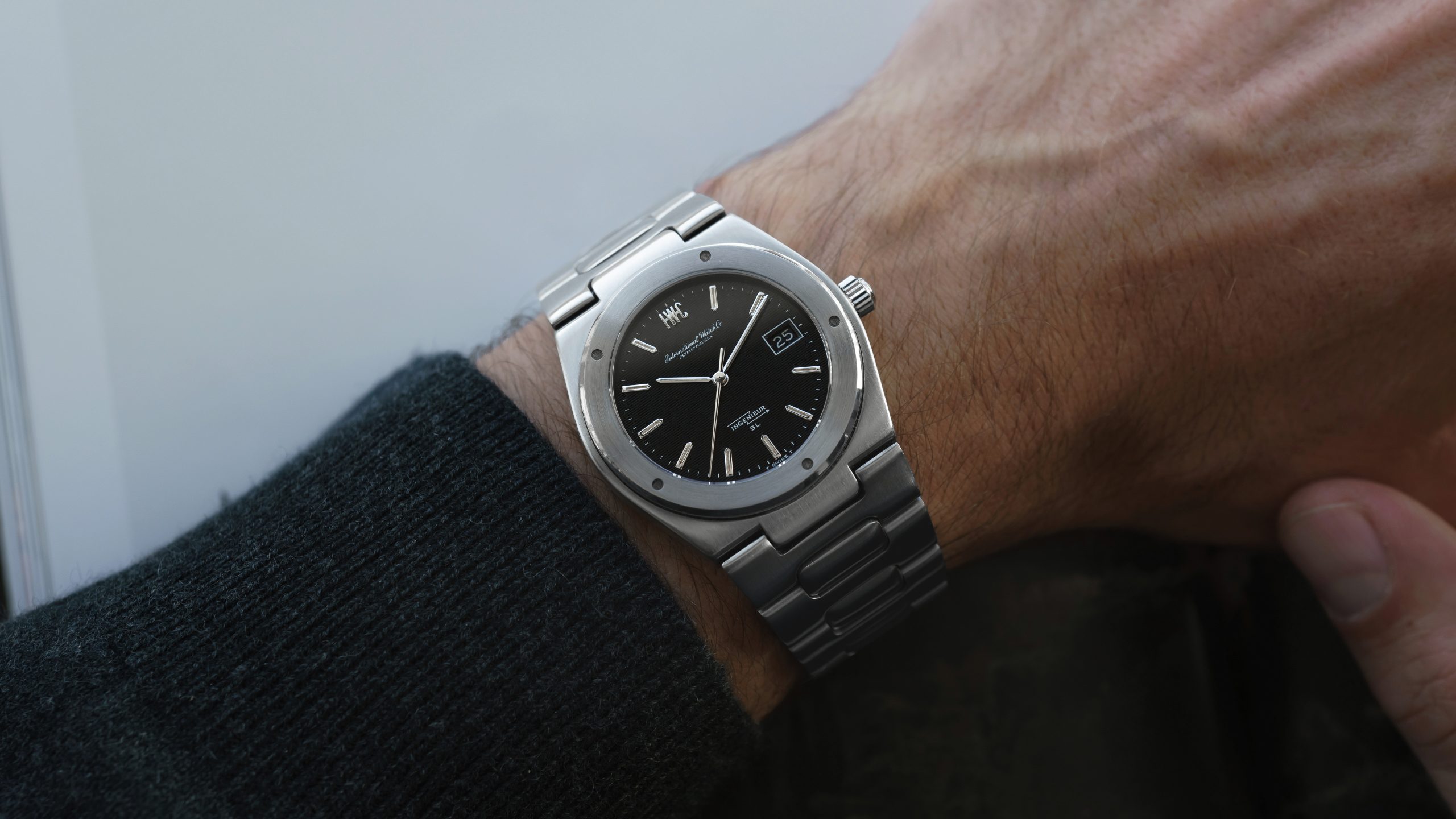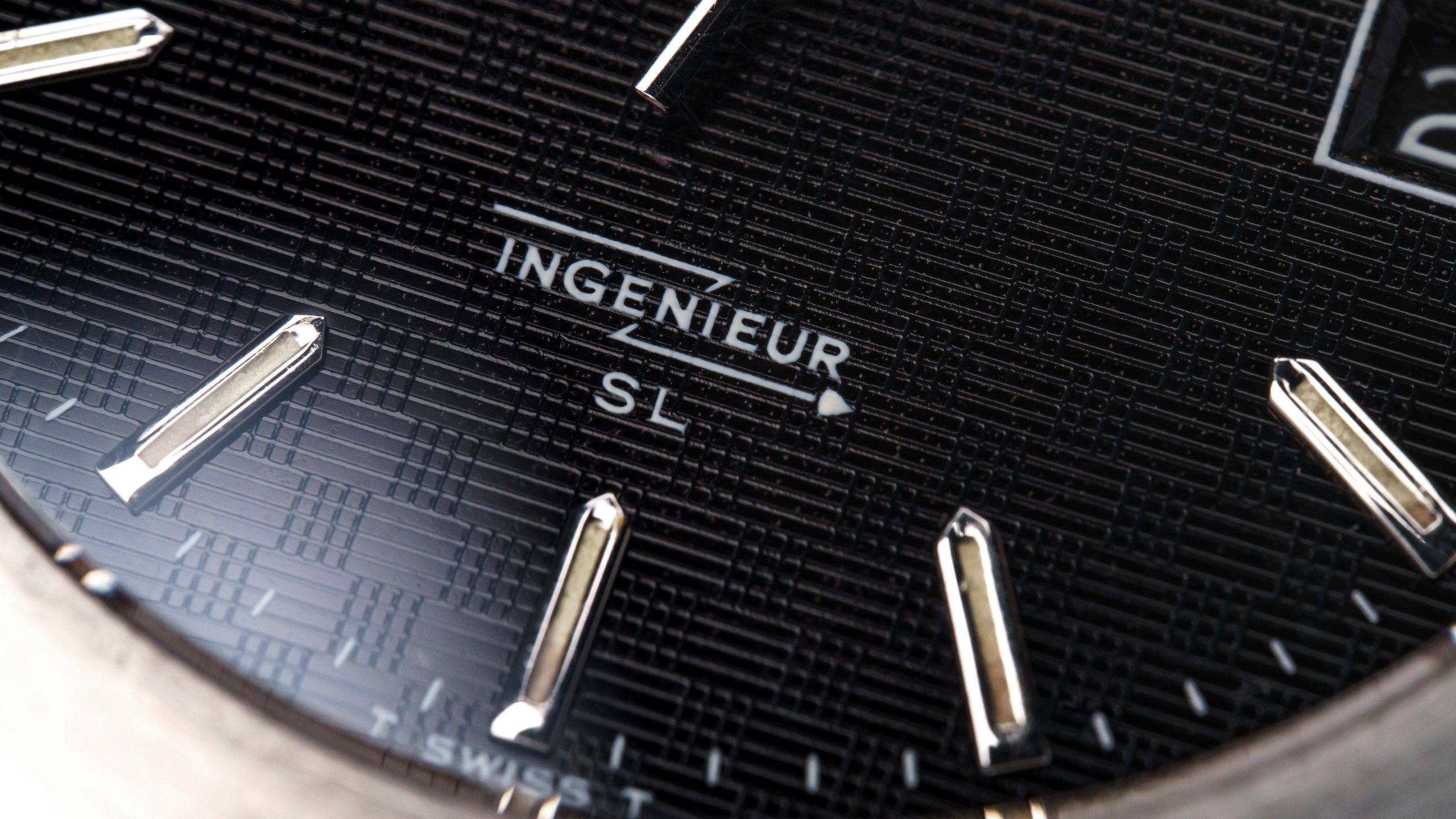In 1976, IWC radically redesigned the Ingenieur by hiring in Gérald Genta. This was to be the first integrated bracelet IWC. Released within a year of the Nautilus, the ref. 1832 is a highly functional and highly designed object. The Ingenieur SL was arguably more industrial and purposeful than the other famous 'Jumbo' Genta trilogy including the 5402 Royal Oak and 3700 Nautilus. Though this first integrated Ingenieur, ref. 1832, was not a widespread commercial success for IWC, it has aged extremely gracefully. With hindsight it is obvious that the 1832 has become of cornerstone of IWC's identity, setting the path forward for technical, teutonic design.
Throughout its lifespan, the 1832 was only produced in 598 examples. It was made in 543 steel examples and 55 in yellow gold (ref. 9232). The development cost of hiring in Genta for design, creating a new antimagnetic calibre, and using true guilloché to create this chequered dial meant that the price each sold for in 1979 was 2370 USD (at a time when a Milgauss cost 725 USD). This slow commercial debut and the accidental rarity that resulted has only added to its appeal for collectors decades later.
Technically, the 1832 is rather remarkable. Where the Audemars Piguet and Patek Phillipe only focused on water resistance, IWC designed their integrated sports offering for water and magnetic resistance. The 3-body case is built around a Faraday cage, providing 1000 Gauss resistance. Its design is both more masculine and bold than its peers, with contrasting satin and mirror surfaces. Interestingly, the bezel and caseback are both screwed down, meaning that the 5 recesses on the bezel are always randomly located. It was also the only watch of the trilogy to have its own, entirely in-house calibre. The calibre 8541B was an enhanced 8541ES with many amagnetic alloys for various components. It retained the genius Pellaton winding system with a NivaFlex mainspring. The calibre was also mounted on small rubber shock absorbers to enhance its durability. The 1832 was as ambitious in technical merit as it is rugged in design.
Unlike the Royal Oak or Nautilus, the Ingenieur SL's use of 8541B meant the dial received a running seconds. The dial of the Ingenieur SL is a black hand-turned guilloché, with tritium applied baton indices and logo. The guilloché pattern was inspired by German graph paper. 1832 debuted the highly designed Ingenieur SL logo at 6 as well, with a thunderbolt arrow separating each line. Over time, the vast majority of ref. 1832 Ingenieurs have sadly received a service dial at IWC. Original dials are easily distinguished by the 'T Swiss T' signature, denoting tritium, as opposed to the Swiss-only seen on most examples, indicating a Luminova replacement. This example, with its original dial and handset, is a treat to behold.
While not the first Ingenieur, the 1832 is arguably the most beloved IWC sports watch ever made. It was IWC's first integrated sports watch, and it debuted with a blind technical ambition few can rival decades later. The design that these practical demands necessitated was unusually daring, yet that boldness has aged with a remarkable grace. It has its charming quirks like the bezel hole placement, tritium, and guilloché. And they are objectively, extremely rare. The 5402 was produced in 6050 examples, 3700 in roughly the same amount. This is about ten times as scarce as either and of those 598 examples, few have their original dials. The 1832 is one of the greatest IWCs ever made, the most serious of Genta's 'Jumbo' trilogy, and fully embodies the rugged charm that IWC built their brand on through the pre-2000s.


